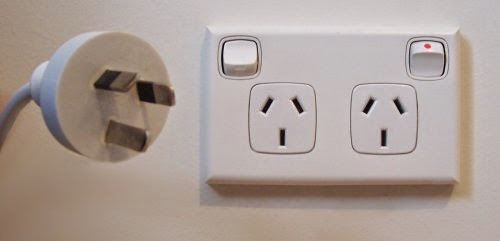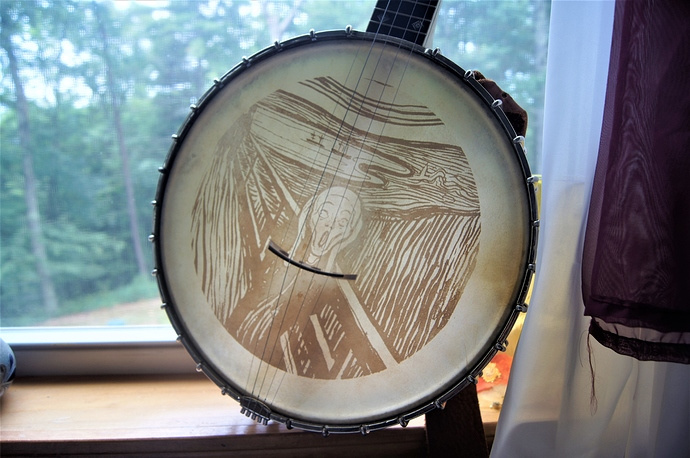Whoever put that text there was either not thinking at all or has a rather wicked sense of humour. Looks nice though!
I’d say that mistake wasn’t on you as much as the one who decided to put the completely redundant “Digital Meter” label on sideways.
You Europeans and your 220V Mains never cease to scare the wits out of me.
It is actually 240V in the UK although we try to pretend it is 230V.
I think it is actually a lot safer here than in the US. With half the current we have less risk of fire.
The pictures I have seen in the forum of wiring in old US houses looks very dodgy. Here we have 30A ring mains and 13A sockets, so we can run 3kW devices without needing to get a dedicated circuit put in. The GF at 800W can be plugged into any socket in my house.
My buddy is remodeling an apartment house he has had for a few years. He found some old Knob and Tube upstairs, and decided it was time to gut the rest of the apartments and get rid of it entirely
He found many scary things, Knob and tube covered by blown in insulation. One run went from knob and tube, to BX to Romex. 3 splices in a 20 foot length. Receptacle boxes stuffed with newsprint (Charred) for insulation. Unterminated Knob and tube in the wall, live and uncapped. and then, this Gem. Yup thats one leg of the knob and tube live and bare, running under the brass tub drain.
I haven’t seen anything remotely as bad as that in the UK. It would be condemned and isolated from the supply until it was completely rewired. That happened to the first house I moved into when I was four in 1966. It was metal conduit with cloth cover wire and a fuse box made from wood and glass.
Supper slick build!
It would in the US as well - once it was found. We have lots of old building stock that was retrofitted for electricity in the early part of the last century.
We also have a bunch of stuff where they used certified and approved aluminum wiring that has a tendency to get brittle and cause fires and banks won’t lend on them when they come back up for sale because of the hazard - has to be remediated and brought up to current code.
But until someone does some renovation work, we have no compliance police that go looking in people’s houses to see if they’re up to the latest codes. But once someone is doing work then generally they need to bring it current to get their permits approved.
Yes there are no compliance police here but when a house changes hands a survey is done, or the electricity company change the meter after 25 years and inspect it, etc, so I don’t think there is any wiring from the turn of the last century left.
Our house was condemned in 1966 because my dad wired up an electric clock and the lights went out. He called an electrician and he condemned it and left is with just one light on a stand.
UK electrical safety is probably the best in the world. We only have 3 pin sockets with an earth and the live and neutral are shuttered. The live and neutral pins are insulated apart from the tip on a modern plug so you can’t touch them when the plug is half in. The ring is fused at 30A so all plugs have a fuse to match the downstream cable rating.
Everywhere else I have been don’t have fused plugs and not all sockets are earthed and plugs are not polarised so you can swap live and neutral.
In the US new (or renovated) wiring moved to the first about 50 years ago and the second about 20 years ago. Virtually all new (20 yrs) devices are polarized plugs with grounds or self-grounding but still with polarized plugs.
We have non-stop compliance police here in Australia.
EVERYTHING needs to be checked, signed for, certified and then checked off again.
Even concreting in some steps in the garden over 1m in height needs the local council to wave their regulatory magic wand
Honestly as great as it is for safety reasons i do miss the more common-sense approach of Germany or the USA.
Over here we run (single phase) 230v +/- 6% or (3-phase) 400v.
Our house is on 3-phase mostly due to our sauna’s requirements
Electroboom goes on and on at how unsafe US electrical stuff is and the prong thing is one of his favorite rants. I had never thought about it.
Oh wow, thanks for reminding me… i HATE the US and EU style of 2 prong plugs… they are too easily dislodged and seem crazily unsafe to me.
This is the Aussie style

but they look so sad! 
As a banjo player, I resent that painting.

Engraved with a Glowforge on a natural calfskin head.
(or am I getting off subject with the 2159th post in this topic?)
The permitting situation in the USA varies by municipality. A friend who lives nearby needs to involve the city permitting office to install a new telephone or ethernet jack–madness.
Meanwhile, where I live in unincorporated county land, my street has a literal mansion on one end, while the other end has a decrepit former pig processing plant made into a house with ramshackle add-ons built from lumber scraps and plastic tarp.
I ran into that a lot doing that exact work. That’d be the electrical unions getting involved and trying to declare low-voltage cabling their exclusive right to install. Of course, when you’d point out the the state says otherwise it’s like you’d just kicked their dog and now they’d bring as many inspection dings as they could give you and still insist on their own regulations knowing it’d be less headache than fighting it through the courts.
I would love to be able to get 3-phase to my house. Would have saved me the hundreds of dollars I spent on VFDs for my shop. I checked with the electric co and they quoted me almost $3,000 to bring a line to my garage.
Same in the US, although there are older sockets grandfathered in. Only our hot is shuttered, but the neutral isn’t a problem unless things are wired incorrectly.
I believe our pins are shorter. You’d be hard pressed to get a finger in between the base of the plug and the socket after the prongs have made a connection.
Typically in the US we’re fused at 15A (plus only 110v) so we don’t bother with a fuse in every plug, although devices usually have some sort of fusing/overcurrent protection built in. Any household circuits that are required to be 20A (kitchen/bathroom) are usually also required to be GFI, and since 2010 (I think) everything needs to be AFI protected.
I don’t think one method is necessarily better than the other, and last I saw I think the incident rates were comparable. So who knows ![]()
What kind of sauna do you have? We put in one last year but it runs on 120V/20A (infrared). I can’t imagine what you’re running that needs 3-phase power (we used to use that to run carnival rides at the church bazaar ![]() ).
).
Except the US style with the round ground pin on top is supposed to be safer than the ones where the ground prong is on the bottom - you can’t drop something onto a loose plug and short it out unlike the old style 2 on top & ground on the bottom.
